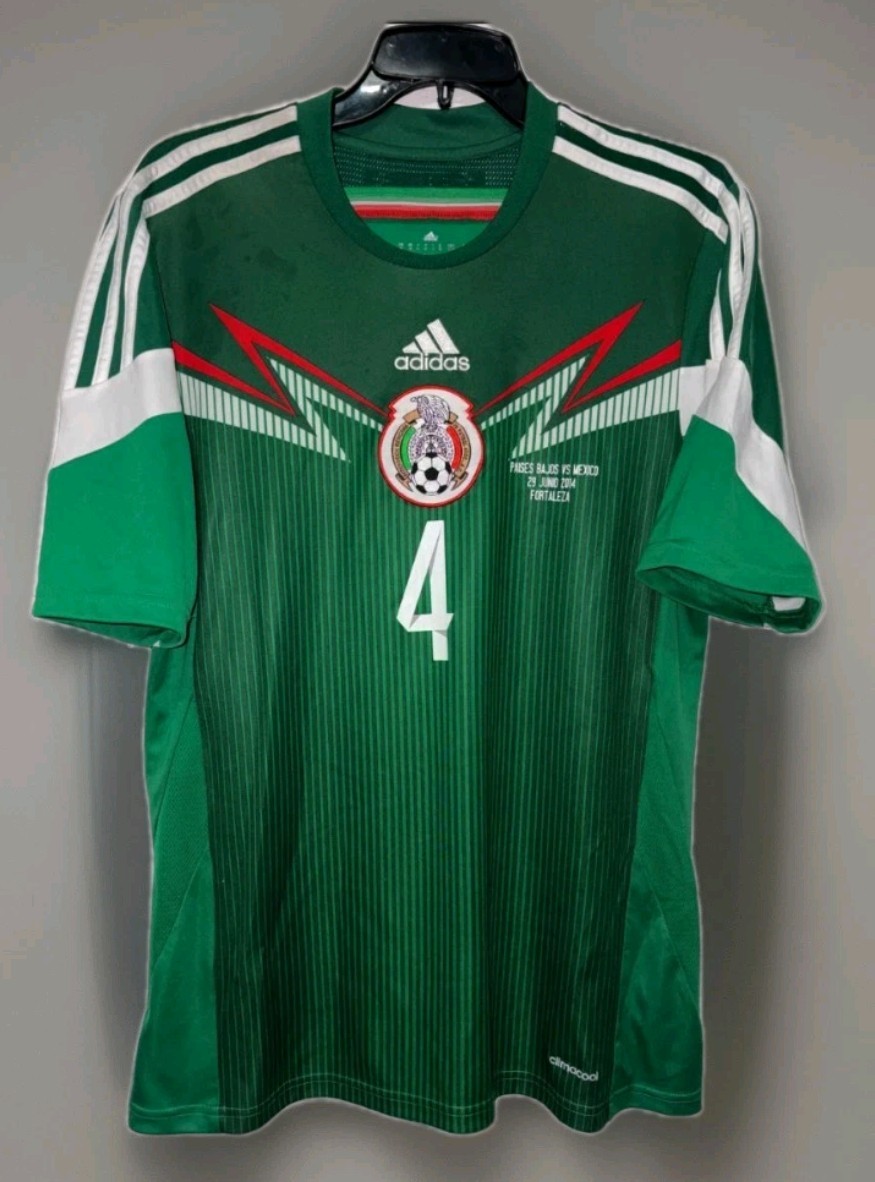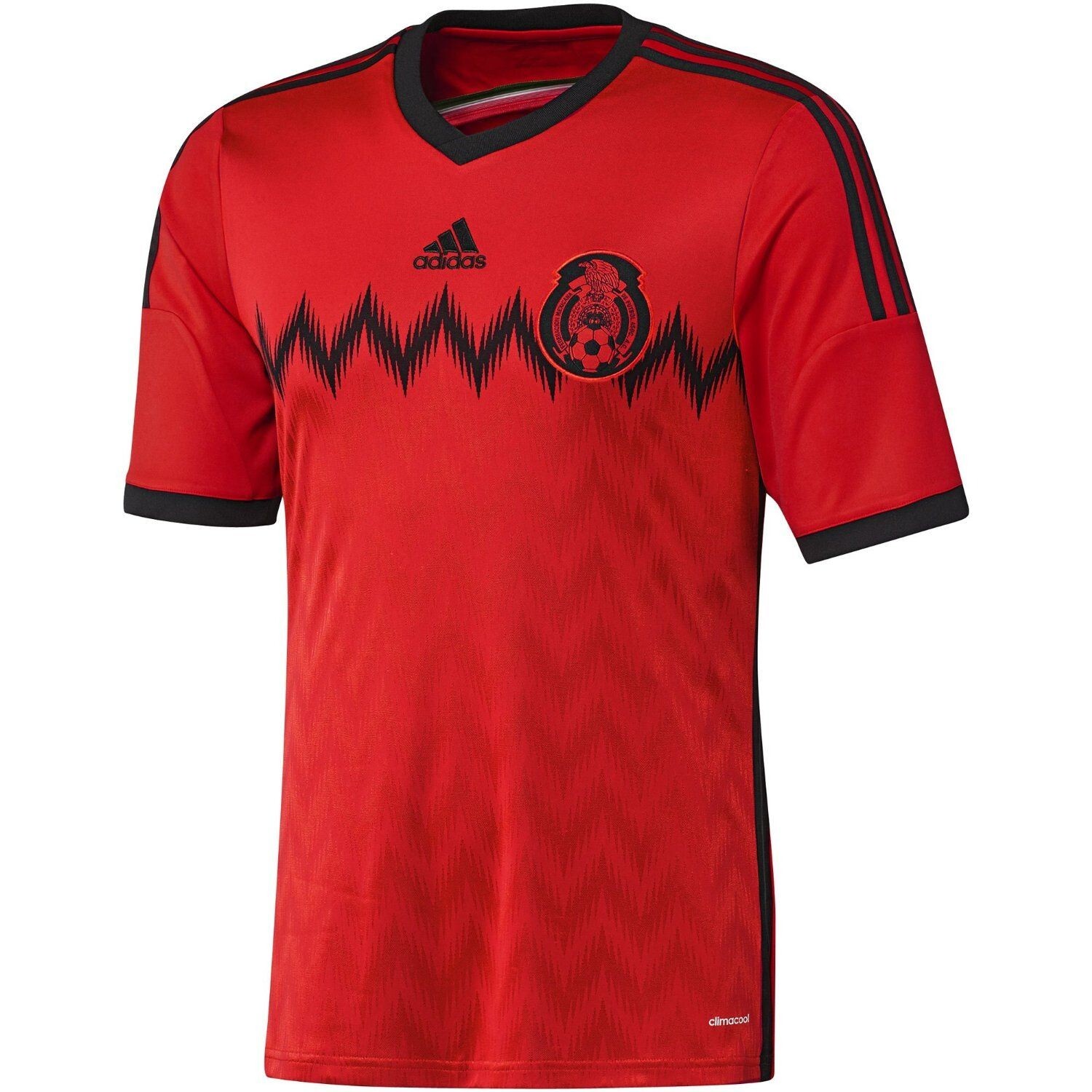I started this whole thing completely accidentally. I was just scrolling through some old World Cup clips a couple of months back, you know, procrastinating big time, and the 2014 Mexico kit flashed up. The one with the green lightning bolts. Man, that thing was aggressive, totally unique. I remembered how much I loved the look back then.

My first thought was, “It’s been ten years, maybe I can score a decent one cheap.” Classic mistake. That single thought propelled me into a full-blown investigation that lasted nearly four weeks just to determine a real market value, let alone find a decent copy.
The Initial Scrape and The Fake Filter
I kicked things off the way most folks do. I hit up eBay first. I typed in “2014 Mexico World Cup Jersey.” What immediately flooded the screen was predictable: pure garbage. Ninety percent of the listings were cheap fakes coming out of Asia, obvious reprints with paper-thin fabric and badly applied heat-pressed names. The prices were laughably low—$25, $30. Those weren’t for collectors; they were just Halloween costume fodder.
I realized quickly I had to drastically narrow the search parameters. I moved from looking for “jersey” to specifically looking for “authentic player issue” or “NWT Adidas 2014 Mexico.” This immediately cut out about 80% of the junk, but it didn’t solve the problem of clever fakes. Fakers these days are good. They know how to replicate the look, but they usually fail on the fine details.
My first big technical step was establishing my authentication checklist. I focused on four specific things I needed from any potential seller:
- The close-up photo of the neck tag: The font size and alignment on the actual Adidas sizing tag (the one with the tiny numbers) had to be perfect. Fakes always mess this up.
- The inside wash tag: This had to show the specific manufacturing product code (usually a nine-digit alphanumeric sequence). I would then cross-reference that specific code against known authentic codes from that era, which I grabbed from deep collector forums.
- The sleeve patch texture: The official FIFA World Cup patches from 2014 had a very distinct velour/felt feel. If the listing described the patch as being plastic or vinyl, I moved on.
- Seller history: Had to be 98% positive or better, with significant feedback specifically for sportswear. If they sold shoes, watches, and random electronics, I didn’t trust them with a high-value kit.
By enforcing this checklist, I managed to whittle down hundreds of listings into maybe five or six genuine prospects globally. That’s when the rarity really smacked me in the face.

Moving from Supply Check to Rarity Assessment
The standard supply was near zero. Most genuine kits from that tournament have been either worn out, damaged, or are sitting deep in the closet of someone who doesn’t realize what they’re holding. I had to pivot from checking general sales platforms to infiltrating dedicated collector communities.
I spent a solid week just lurking in specialized Facebook groups and the old, crusty forums where the high-end kit traders operate. I put out feelers and placed “Want To Buy” requests for specific sizes (M and L). The response was deafening silence. Most of the old guard either laughed or told me they hadn’t seen a NWT example surface naturally in years.
I realized the rarity wasn’t just about age; it was about the specific demand for that particular design. It was a polarizing, aggressive jersey, and those designs tend to become highly sought after years later. People either hated it or loved it, and the lovers now want it back.
Calculating the Collector’s Value: Actual Sales Data
The biggest hurdle in valuation is that people list things for what they hope to get, not what they will get. I needed cold, hard sales data. I spent three days scraping completed sales data, focusing only on listings that ended with a successful bid or “Best Offer Accepted” that was publicly revealed.
Here’s what I found after tracking several international auctions and private sales:

- Good Used Condition (GUC) Replica (Fan Version): If it was authenticated, clean, and didn’t have major rips, it consistently closed between $80 and $120. That’s just the fan version!
- Good Used Condition (GUC) Authentic (Player Issue): If it had the proper Adizero tech tag and showed light wear, prices typically ranged from $180 to $250. This is the minimum entry point for a serious collector.
- New With Tags (NWT) Authentic Short-Sleeve: This is where things went wild. I tracked two confirmed sales in the last three months. One hit $350. The other, fully customized with “J. Hernandez 14,” closed at $410.
So, answering the question: How rare is it? It’s rare enough that if you walk into a major collector event with a NWT authentic, you are holding $400 cash in your hand, easy.
Why did I put in all this insane effort just to price a shirt? It goes back to 2014. I was living overseas at the time, and I remember watching the game where they wore this specific kit. I was having a really rough patch personally—burned out from work, stressed, trying to figure out if I needed to change careers.
I’ll never forget how much that tournament, and seeing people passionately wearing that loud, aggressive design, lifted my spirits a bit. I bought a cheap replica souvenir then, wore it until it disintegrated. A couple of years later, I found my footing, but that physical memory was gone. Now, the hunt isn’t just about collecting; it’s about recapturing a tiny piece of the emotional resilience I needed back then. That feeling is why I will spend weeks meticulously digging through product codes and seller histories just to secure the real deal.
I haven’t bought one yet, by the way. I’m holding out for a long-sleeve authentic. I know what that will cost now. It’s going to be brutal, maybe $600, but I’m ready for the next phase of the hunt.
